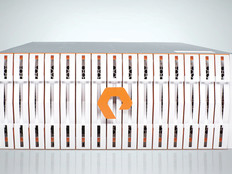The Skinny on Fat Browsers
Can you run an entire operating system in your browser? With the power of the cloud and an Internet connection you can. Welcome to the era of the “fat browser.”
The idea behind a fat browser is simple. Increasingly, we are seeing devices that are powered by cloud services. Google Docs and Microsoft 365, for example, allow users to create documents and store them in the cloud. And photo editing apps, such as Aviary, are competing with more traditional software, such as Photoshop.
The truth is, not everyone is ready for a fat browser. Or maybe the cloud isn’t ready for every user.
How do you know whether you are using a fat browser? Think about the way you use your device. If you rely on your browser not just for surfing the web but also for productivity and advanced functionality, then you are entering the realm of fat browsers.
The Google Chrome OS takes the reliance on the web to the next level with an operating system designed around cloud usage. Chromebooks, such as the Samsung XE303C12, ship with a minimalist OS and are intended for users who access most of their computing needs through a browser.
What’s the difference between a fat browser and a thin client?
While a thin client typically relies on a connection to a server to function, the fat browser model uses devices with local storage and productivity apps. Additionally, thin clients can be fat in a more literal sense. Desktop computers can serve as thin clients when configured as such. Conversely, fat browsers are running on thin devices. Tablets and smartphones are great examples of devices that are powered by their browsers and a connection to cloud services.
Why are some browsers still skinny?
The truth is, not everyone is ready for a fat browser. Or maybe the cloud isn’t ready for every user. Many heavy-duty applications need to be run locally. Most of us use a hybrid model, meeting some of our computing needs through the cloud and some with our local desktop. That model will probably continue to work, but lighter users who mostly need access to a computer for e-mail and word processing could find themselves living in the cloud sooner rather than later.








